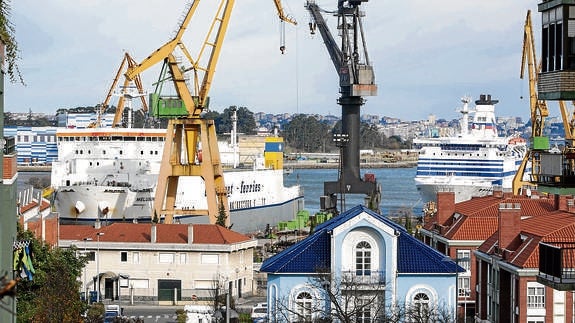

Secciones
Servicios
Destacamos

PPLL
Sábado, 20 de septiembre 2014, 17:58
Many travellers from the post-industrial era discovered the pleasures of immersing themselves in the hidden world of production, with all its strange noises and potent smells. Go into a mine, visit an old fabric factory, see how a dam works, walk around an iron and steelworks museum and follow the stages of wine-making, possibilities all within reach here. There are fantastic landscapes, modified at the hands of the people living here who have opened up great chasms in the ground, built chimneys, cranes, silos and sheds, and scattered the horizon with brick, iron and concrete structures. Welcome to industrial territory.
Cantabria, for more than a century, has been a productive area where new businesses can thrive and it has taken advantage of what the region has to offer to facilitate economic activity and create wealth and progress in society. Moreover, it is one of the most heavily mined and most industrialised areas in all of Spain. The impressively high figure for Gross Domestic Product is, and has been for more than a hundred years, well above the Spanish average.
The steel and iron factories, the mines, the power stations, the dams, the wine cellars, the cloth industries or the makers of electronic components may not be as old as a Gothic cathedral but are just as fascinating.
There are many factories spread all around the province. It may not be enough just to mention Nestlé, Solvay and Ferroatlántica, factories belonging to Bosch, Bridgestone, Nissan, Gamesa or Gerdau-Sidenor. Unbelievable spaces, complex machinery, vast structures and buildings, motors, turbines, drumming and colour.
There are factories such as Equipos Nucleares, Saint-Gobain PAM Metals and Saint-Gobain PAM Glass, Repsol and Global Street Wire from Celsa. Society is more and more involved in the tertiary sector and draws closer to the attractive world of industry and production with curiosity and surprise. There is as much land already taken up by these factories as the land still free to continue growth. The region still has an amazing 200,000 square metres set aside by the government-run company Sican which will allow the land to be bought without having to pay the land rights for five years, and subsequently these land rights will be at just 6% of their price.
However, looking further forward than simply business opportunity in the area, which in 2015 will hit another architectural milestone with the completion of the Centro Botín in the Santander bay, great precious gems are hidden here. For example, the Great Tank of Maritime Engineering in Cantabria from the Hydraulic Environment Institute, an enormous pool where scientists are simulating tsunamis, testing off-shore wind farming and designing energy sources for the future. In a nutshell, this great tank is more of a miniature sea.
The shipyards, the Hydraulic Institute or the mine railway rehabilitation, dicover the industrial tourism possibilities. :: r. ruiz / A. fernández
The whole construction belongs to a multi-million pound network of 54 Singular Scientific and Technological Facilities designed to guide Spain into the wonders of science. The tank can be found in the Science and Technological Park, an enormous area in El Alisal graced with intelligent buildings and the latest in modern technology. Cantabrias own Silicon Valley.
At the other side of the park, the Sodercan building stands and is where The Regional Society for Local Development offers a wide range of financial help to training the workforce and funding new projects.
Just a few landscapes have been modelled by industrialisation as the bay of Santander has. On its shores, in its docks, chimneys, and industrial units, there is a frenzy of activity and production. The past meets the present in its lonely ruins and reconditioned factories. And still there is more. The San Martín river mouth in Suances, just a few miles from the sea in an area which is both beautiful and eerie, where the light hits iron and wood skeletons at the mercy of the ocean. Here, the aged facilities of the Asturaina Zinc factory, known today as Azsa, and its old units and semi-abandoned slipway can be found.
Publicidad
Publicidad
Te puede interesar
Publicidad
Publicidad
Esta funcionalidad es exclusiva para suscriptores.
Reporta un error en esta noticia
Comentar es una ventaja exclusiva para suscriptores
¿Ya eres suscriptor?
Inicia sesiónNecesitas ser suscriptor para poder votar.